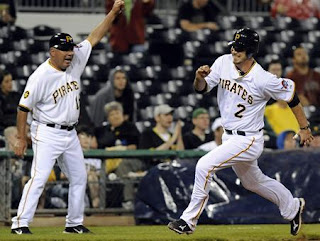This past winter I spoke at a coaching clinic where the keynote speaker was current Pittsburg Pirate third base coach Nick Leyva. He answered a lot of questions from the audience. One was, “How do you know when to send the runner home on a base hit?” His answer was very instructive for coaches but it also should teach outfielders a thing or two about what their priorities should be.
To answer the question, Coach Leyva said the toughest outfielders to deal with as a third base coach aren’t the ones with the strongest arms. They are the ones who get to the ball the fastest. When deciding when to send runners, Coach Leyva said it often comes down to whether or not the runner touches third base before or after the outfielder catches the ball. If the runner gets to third base before the outfielder touches the ball, he sends the runner almost every time. If the outfielder touches the ball before the runner touches third base then many other variables have to be weighed before deciding to hold or send the runner. Variables like the arm strength of the outfielder, his accuracy, how fast he gets rid of it, how fast the runner is, the inning, the score, the number of outs, and who is batting next. Unfortunately for the third base coach, he only has a split second to weigh all those options. And remember, the only time a third base coach gets any publicity is when he gets a runner thrown out at home plate.
You can see why a third base coach loves outfielders who are slow getting to the ball. It makes their job so much easier.
Good tips for third base coaches but it should also inspire outfielders to continually work on getting to the ball faster and faster. Fast jumps off the bat, great first step footwork, proper angles, and general aggressiveness to and through the ball are all improvable skills that outfielders should make time for during practice.




































